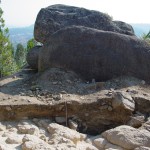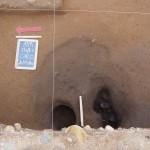

 …where it is possible to see the adaptation of a natural outcrop into a monolith with a burial and mound…
…where it is possible to see the adaptation of a natural outcrop into a monolith with a burial and mound…
 …and in the Neolithic in Amoreira settlement the remains of a domestic landfill, reused for the installation of piles …
…and in the Neolithic in Amoreira settlement the remains of a domestic landfill, reused for the installation of piles …


 …where it is possible to see the adaptation of a natural outcrop into a monolith with a burial and mound…
…where it is possible to see the adaptation of a natural outcrop into a monolith with a burial and mound…
 …and in the Neolithic in Amoreira settlement the remains of a domestic landfill, reused for the installation of piles …
…and in the Neolithic in Amoreira settlement the remains of a domestic landfill, reused for the installation of piles …